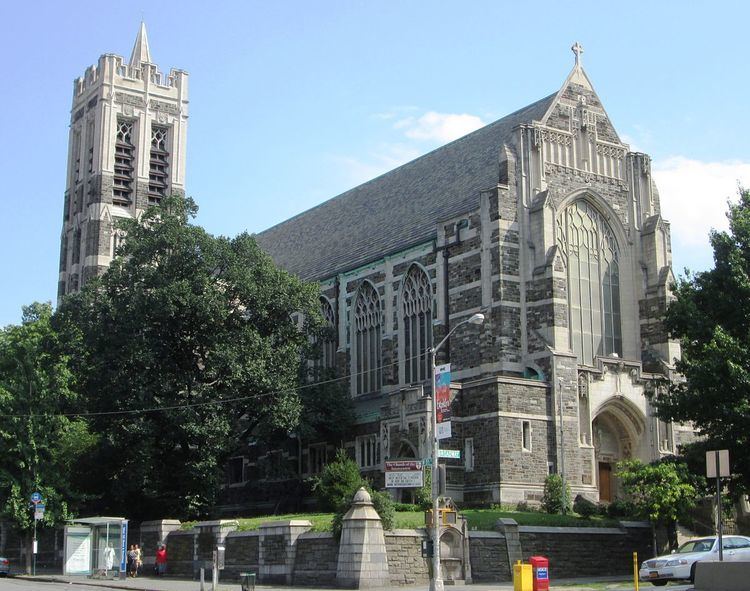Built 1912-1915 Designated NYCL August 16, 1966 Area 9 ha Added to NRHP 24 July 1980 | NRHP Reference # 80002677 Opened 1842 Phone +1 212-283-6200 Architect Bertram Goodhue | |
 | ||
Address 550 W 155th St, New York, NY 10032, USA Similar Audubon Terrace, Church of the Heavenly, St Thomas Episcopal Church, Cathedral of Saint John the, Holy Trinity Episcopal Church | ||
The Church of the Intercession is an Episcopal congregation located at 550 West 155th Street, at Broadway, on the border of the Harlem and Washington Heights neighborhoods of Manhattan, New York City, on the grounds of Trinity Church Cemetery. The congregation was founded in 1846, and the current sanctuary, built in 1912-15, was designed by Bertram Grosvenor Goodhue in the Gothic Revival style. From 1906-1976, it was a chapel of Trinity Church.
Contents
The Church of the Intercession and its Tudor Revival vicarage were designated New York City Landmarks in 1966, and the complex was added to the National Register of Historic Places in 1980.
History
The congregation which became the Church of the Intercession was founded in 1846 in Carmansville, a hamlet which would later be known as Audubon Park before becoming part of the Washington Heights neighborhood, by John James Audubon and John R. Morewood; it was incorporated in 1847. Services were inititially held in Morewood's home, with members who came from both Trinity Church on Broadway and Wall Street, and from the Church of the Ascension at Fifth Avenue and 10th Street.
In 1847, the congregation completed building their first sanctuary, a Victorian Gothic style wooden structure at West 154th Street and Tenth Avenue (now Amsterdam Avenue). The building's outline can still be seen on what was the adjoining building. In 1871, the vestry decided to move the parish and sell the building.
The congregation's next church was a stone building designed by Rembrandt Lockwood and located at 158th Street and Grand Boulevard, which is now Broadway. However, dissension within the congregation suppressed financial support for the parish, which became insolvent; the church as attached by the sheriff, and services proceeded only on the sufferance of the authorities.
Eventually, the congregation was able to recover the church, but by 1906 it was overcrowded, and the parish was still in debt. To alleviate these problems, a deal was struck with Trinity Church, which had intended to build a chapel on the grounds of its cemetery, to disestablish the Church of the Intercession as an independent parish, to become a Trinity Chapel, the Chapel of the Intercession. The cornerstone of a new sanctuary was laid in 1912, and the building was consecrated in 1915. The architect, Bertram Grosvenor Goodhue of Cram, Goodhue & Ferguson, was a master of the Gothic Revival style, and the resulting church is considered to be his masterpiece. Goodhue incorporated elements from other styles into the building, such as the narrow and tall entrances which evoke the English Perpendicular style, while the Decorated Period can be seen in the tracery of the pointed windows, and the tower suggests the Tudor style. The church was built by Edward A. Wehr of Pittsburgh, he considered this his finest piece of work. (The American Magazine, 1925)
The congregation again became an independent parish in 1976.
